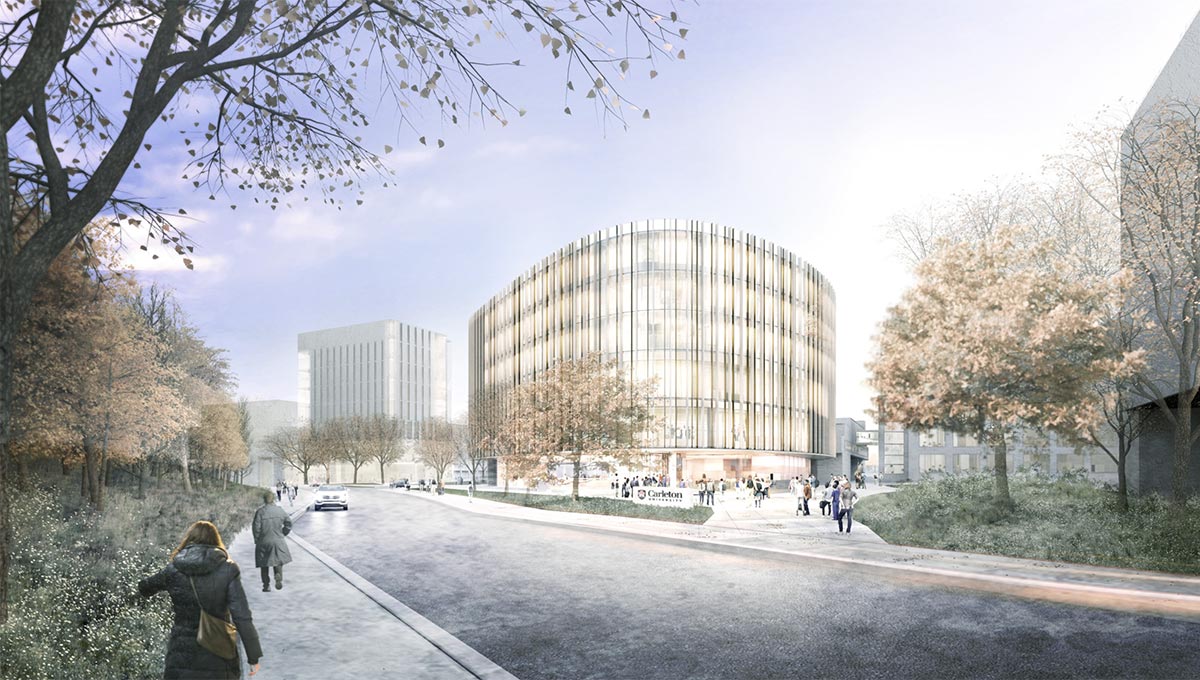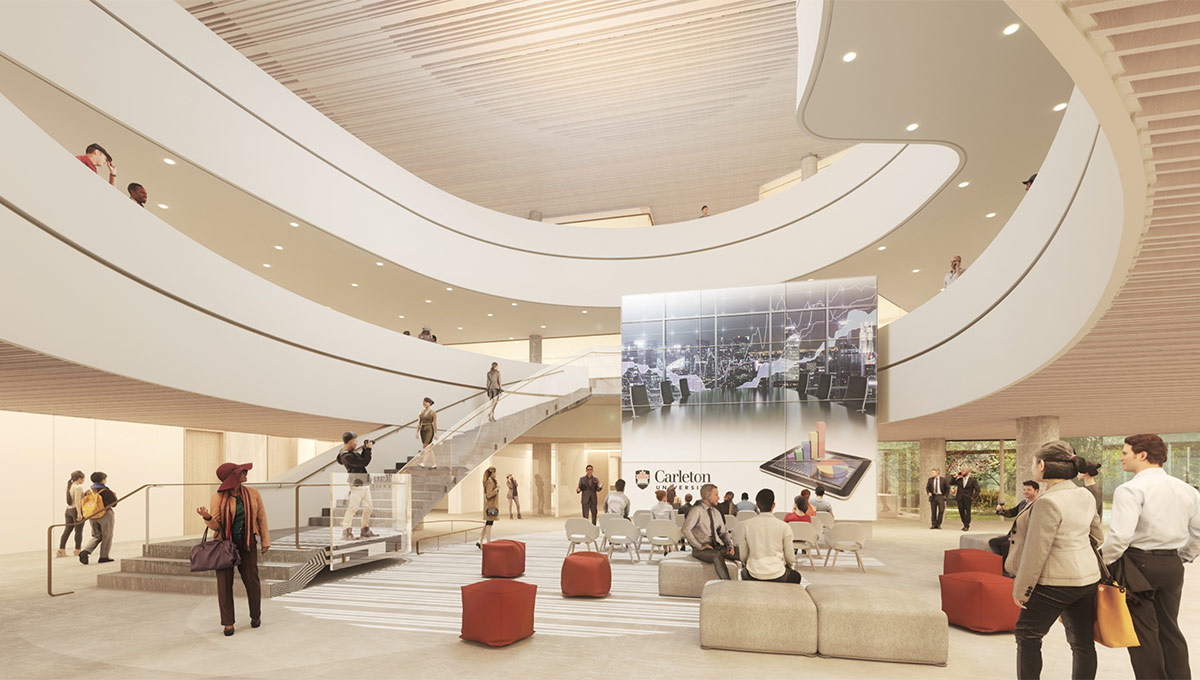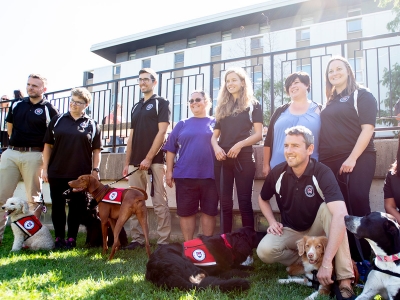By Tyrone Burke
Learning isn’t only about sharing information we already know. It’s about generating new knowledge through discovery, creativity and collaboration.
It’s about catching lightning in a bottle and, with a signature new building designed by Toronto architects Hariri Pontarini, the Sprott School of Business is seeking to do exactly that.
“The Nicol Building is a game changer,” says Interim Dean Linda Schweitzer. “It creates a focal point for the school, which is currently distributed across six floors of Dunton Tower. It will be centrally located and facilitate interaction. It represents the sense of community and belonging that we’ve been working so hard to create.”
Made possible by a $10-million donation from the family of Ottawa real estate developer and Carleton alumnus, the late Wes Nicol, construction is slated to begin in 2018, with the university targeting fall 2020 for its completion. Once the doors open, the Sprott School’s new home will provide an innovative new space for collaboration and learning.
“What we’re really talking about is co-learning, the co-creation of ideas,” says Robin Ritchie, associate professor of Marketing.
“The Nicol Building will create a learning space for the kind of education we need in the 21st century – not a professor lecturing students, but students working with faculty members to learn. To come up with big ideas, to take their genius and come up with something even bigger.”

Nicol Building: Facilitating Experiential Learning
Teaching spaces will feature flipped classrooms and movable furniture that can be reconfigured to facilitate experiential learning. They reflect Sprott’s approach to learning, but they will be available to the entire university community.
That’s because the Nicol Building is meant to be an asset for all of Carleton, not just its business school. It will be centrally located steps from the Carleton O-Train stop and at the tunnel junction linking the University’s academic campus, residences and Athletics. It’s at a campus crossroads, designed to draw in the broader university community.
“We’ve talked about it as a gateway,” says Schweitzer. “It’s steps away from the train, and an obvious way to enter campus. People will come through the building, and it’s been designed to promote chance encounters. Not only within the school of business but with the rest of the university.
“On the main floor – a three-story atrium with a mezzanine – you’ll look up and see our Student Investment Fund’s trading lab. Our student resource centre will be there, with students working and collaborating. Faculty will be able to stop by and talk to them about anything as they grab a coffee. So students will have non-formal opportunities to interact with faculty.”
For the Sprott School, that’s a bit of a novelty. Though it’s currently centered in Dunton Tower, classes and events are held in buildings across campus. There isn’t one place where the entire school — undergrads, grad students, faculty and staff — comes together.
“The Nicol Building provides us is a place where we can be recognizable to one another,” Schweitzer says.
“It will create a better sense of identity; to show this is who we are.”
It will also improve the Sprott School’s ability to demonstrate Carleton’s capabilities to potential partners. Visitors inevitably make judgments based who they meet and what they see on a visit to campus. Some of Sprott’s assets — like the Business Career Management Centre and student services, are easily accessed — but others – such as the award-winning Lead to Win startup accelerator — are distributed across campus. It’s impossible to show anyone everything, especially within a limited time frame. The Nicol Building will change that by bringing it all under a single roof: researchers, faculty, labs, and, of course, students.

Improving the Educational Experience
For students, it will also improve the educational experience.
“Having this modern and contemporary building is really going to help further our education,” says Hanna di Virgilio, president of the Sprott Business Students Society.
“We’ll have new technology that will help us enhance our projects, and everything will be a little more accessible. I really believe that will drive up engagement from the student population. They’ll walk on the first floor and everything will be gathered together. Club offices, student association offices. It will help us a lot.”
The Nicol Building will continue Carleton’s leadership in sustainability from its core to its skin. With features that include the use of innovative bubble deck technology in its concrete structure and a rhythm of ample glass openings modulated by solid fins to shade the glare and heat of the sun, the project is slated to achieve 4.5 Green Globes, with an overall score of 84 per cent.
Carleton’s Interim President Alastair Summerlee sees the Nicol Building – and other nearby projects like the new Health Sciences Building — as an important piece of the university’s shared future.
“We have to think as a group and consider how we will make this area be the real entry point to Carleton, “Summerlee says.
“To get everybody involved in thinking collectively about what this space is going to look like. Yes, it’s a home for business, and for students to do their programming, and get some sort of touch and feel around business. But it’s also a community opportunity. How do we collectively create a really impressive space that we’ve all had a hand in making.”
Tuesday, October 10, 2017 in Buildings, Entrepreneurship, Sprott School of Business
Share: Twitter, Facebook



